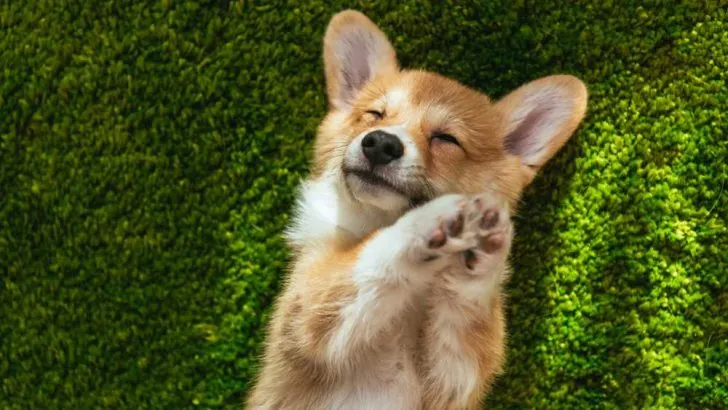A dog is a vital part of every family. They can brighten a gloomy day and bring a smile to your face as soon as you get home from a long day at work. And if there is any dog that’s best suited for greeting you with a dose of happiness at the door, it’s a Corgi.
All of that probably sounds like a great addition to your life! And it is, but there is something else that’s a part of the package: Corgi shedding.
So, do Corgis shed a lot? How much do Corgis shed a day?
Yes, Corgis shed a lot. As for how much – well, they shed about the weight of a small Corgi.
Now, sure, there are dogs that don’t shed even a little bit. Short hair breeds like a Pitbull or a Pug won’t cover your furniture even if they shed off their whole coat on them.
But you may have figured by now that we are not talking about a short hair dog; we’re talking about Corgi – an adorable, fluffy dog that has more hair than you could imagine. And all that hair gets replaced by more hair, and the new hair gets replaced with well… more hair. It’s a vicious cycle that all Corgis go through.
So are Corgis heavy shedders? Well, that would be an understatement. They are walking fur factories!
So if you have recently woken up from a nap and couldn’t get the hair out of your mouth for the next couple of days, maybe it’s time to ask the question: Why do Corgis shed?
Or even go a full detective mode: Why do dogs shed at all?
There are many questions that people ask when they’re covered with dog hair head to toe. Well, we will try to answer as many as we can. The truth is that there are many reasons for your Corgi to replace its coat (or coats). Sometimes it’s not even up to them!
So let’s go over this subject. By the end, we hope you’ll have enough knowledge about Corgi shedding that you’ll know exactly when and why it is happening.

How Much Do Fluffy Corgis Shed?
Corgis (the fluffy ones especially) shed enough to make a brand new dog every couple of months. Yet, some dogs seem to lose nothing but a little hair every once in a while. So what’s the deal with that?
Well, there are many factors to this. Shedding can be something that happens once or twice a year. But some dogs change their coats completely, and they do it throughout the whole year. You can imagine that all that coat changing gets even more extreme when a dog has more than one! So why do some dogs have more than one coat?
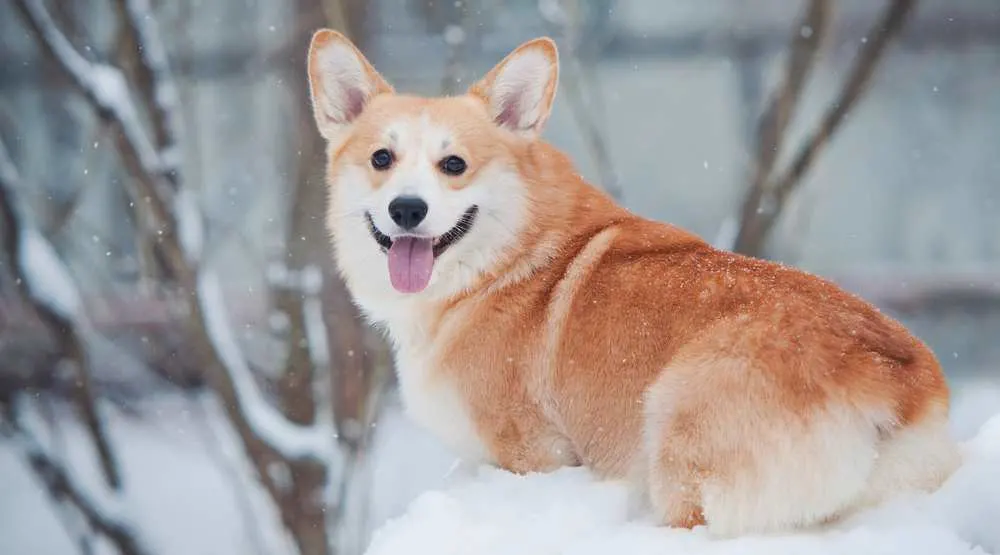
Double Coated Dogs
The origin of a dog breed can tell us whether or not they have more coats. For instance, a Bernese Mountain dog or a Siberian and Alaskan Husky has more than one coat for a simple reason – they lived and were bred in cold weather. But what about the Corgi?
Well, Corgis are quite a famous countrymen in their homeland. They may have a reputation for being great family dogs today, but their history is quite different. Corgis were brought to Wales about 3000 years ago by the Celts. They were bred to be tough little shepherds, and they are great at that job even today.
You can imagine that the hills of Wales are not the warmest and driest places for a little worker like the Corgi. For this reason, it managed to develop a second coat that would protect it during its long outdoor shifts. They don’t come from freezing places like Siberia or Alaska, but they sure don’t risk it with any sort of cold weather.
The undercoat is actually the softer one, and it’s there to keep the Corgis little body warm. The one that you can see is the topcoat, and it’s there for protection. The hair of the topcoat is lengthier and more rigid, and it protects against scratches and water.
As long as the dog stays dry and warm, it can keep working and keep safe. But when you use the same double coat system in the house where it’s already warm and dry, you get a Corgi who’s desperately trying to find the right temperature.
Double coat dogs can have a tough time adjusting to a warmer climate in general, so keeping them well-groomed is very important. Imagine adapting to the harsh weather of Wales or Alaska for thousands of years and then suddenly finding yourself in a modern centrally heated house! They are literally trying to take off their clothes all the time!

When Do Corgis Shed?
So if the Corgi is a dog that’s used to colder temperatures, does that mean that they’re always trying to keep cool? Do Corgis shed all year round?
Well, that depends on a couple of things. No two Corgis are the same, and all we can do here is tell you how much the breed sheds generally. So do Corgis shed bad? It depends on the Corgi!
As we know, there are two kinds of our favorite dog breed, the Pembroke and the Cardigan. We were talking about the Pembroke all this time, but what about the Cardigan? Are they heavy shedders too? How much do Cardigan Welsh Corgis shed?
They shed as much you think – and that’s a darn lot! Well, a Corgi is a Corgi. They just have to shed! So how about weather seasons?
When Is Corgi Shedding Season?
Like any other dog breed, the transition from summer to winter and vice versa means there will be a lot of shedding. The reason is that when summer comes, dogs will get rid of their thicker and fuller winter coats to make room for the summer coats. The hairs are thinner during warmer times of the year, and there are fewer of them too.
This is kind of a general rule of thumb; in these two times, your dog will shed more. Other factors could be important. So we can’t easily answer the “when do corgis start shedding” and “when do corgis stop shedding” questions. We pretty much know as much as the Corgi does!

Age Plays A Role As Well
It’s not all about the weather. The age of your Corgi could play a huge part in determining how much hair it can lose or grow back.
Now, this may seem strange, considering that dogs are always covered in fur, but all dogs get affected by the passage of time, similar to us. More specifically, the hair does. So how long do Corgis shed, you ask? Well, their whole life! But let’s get something clear, your dog won’t go bald when it gets old; the hair will simply get weaker. Old age is not the only period in which hair is affected.
There is a period of a dog’s life when, if it’s healthy, the hair is in a sort of golden age. All dogs will go through this period. What happens is that when they are young, the hair is not yet ready to be as strong as it would need to be. So in the first year or less, a double coat dog like a Corgi, for instance, won’t be prepared well enough for all harsh weather conditions.
But do Corgis shed as puppies? All that talk about weak puppy hair might lead you to believe that you’ll catch a break from it all, at least in the beginning. Well, spoiler warning – they do, and you won’t.
The “golden period” comes in the first couple of years and ends when the dog is an old veteran, ready for retirement. What this means for shedding and dog owners is the following: if you think that your baby Corgis shedding isn’t that bad, you haven’t seen half of it. And if your old family Corgi doesn’t leave bulks of hair behind as it used to, it’s just the years catching up to him. And there’s nothing wrong with that.
Learn More: How Long Does It Take For Corgi Hair To Grow Back?

Corgi Hair Maintenance
So the next lesson is how to keep a Corgi from shedding? There are things that need to be done when you have a Corgi as a part of the family. We’re going to give you some anti-shedding tips and tricks, but we’ll try to go a step further than that. Learning why your Corgis hair is doing what it’s doing is an integral part of the whole operation.
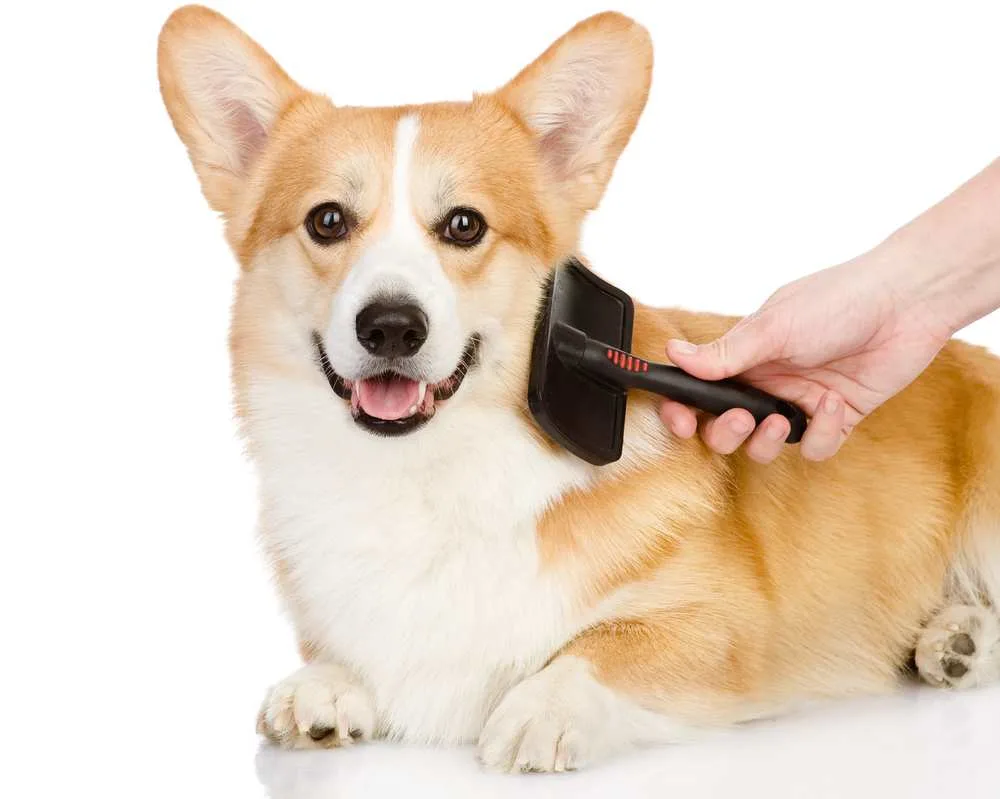
Brush, Brush, Brush!
How much hair do Corgis shed? Well, pick up a brush and you’ll be able to find an exact number of hairs!
Brushing may not seem like some miracle solution, but give it a try. Once you see how much hair you took off your Corgi, it will be obvious that brushing should be a daily occurrence.
Now you may think that because you have the weight of your dog in the hairs you removed, the next time you there’d be less. You are wrong, and you need to accept it right away. Your Corgi is a fur factory, and there will always magically be more hairs than there should be. Brushing your dog four times a week is a must. That’s the minimum amount. But picking up a brush every day definitely won’t hurt. Don’t bother asking him where it all came from, and they’re as confused about it as you are.
The reason that so much hair gets left behind while brushing is because of that double coat that we mentioned a moment ago. If your Corgi needs to replace two coats of hair, and you are taking off the ones that are already out – you can imagine that the number of those hairs goes up quite quickly! But don’t worry, they’ll grow back just fine.
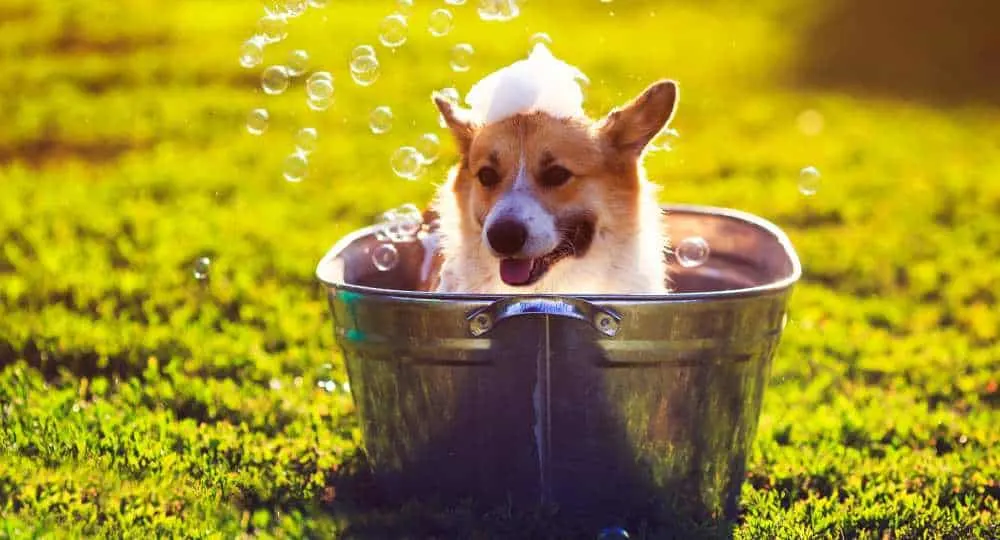
Monthly Bathing
Corgis need to shower; heck, we all do. They won’t exactly be jumping with a smile on their face when you start heading to the bathroom, but they like it, don’t worry. We won’t go over what a doggy shower should look like, but just some tips to slow down the shedding.
First and foremost, don’t shower your Corgi too often. Dog skin is much more sensitive than our own, and too much showering can increase the shedding. Weird, we know.
Your Corgi is not used to being showered at all. Sure, they have ways of cleaning themselves, but the whole bathroom-shampoo concept is kind of strange for them. Not only that, their skin can get flaky and irritated. Hair can’t live in unhealthy skin; it’s as simple as that. But what about conditioning?
Well, conditioning is not something that affects the skin if done correctly. The hair does get some benefits from it, but just like with the shampoo, you shouldn’t use it too often. As far as we’re concerned, showering your Corgi should be done every six to ten weeks. Conditioning is a bit different, and it depends on the conditioner that you are using. One thing that we can guarantee is that if the label on the bottle gives you a number that suggests you should use it more often than the shower – stay away from it!
We know that conditioning your dog’s coat makes it cozy and soft. But the fluffiness has a price. The hairs can get much weaker, and if you’re not careful, it will take your dog a long time before he manages to recover its coat!
So always check the product you are buying, and if your Corgi seems to be losing more hair than you think is normal – go to a veterinarian.
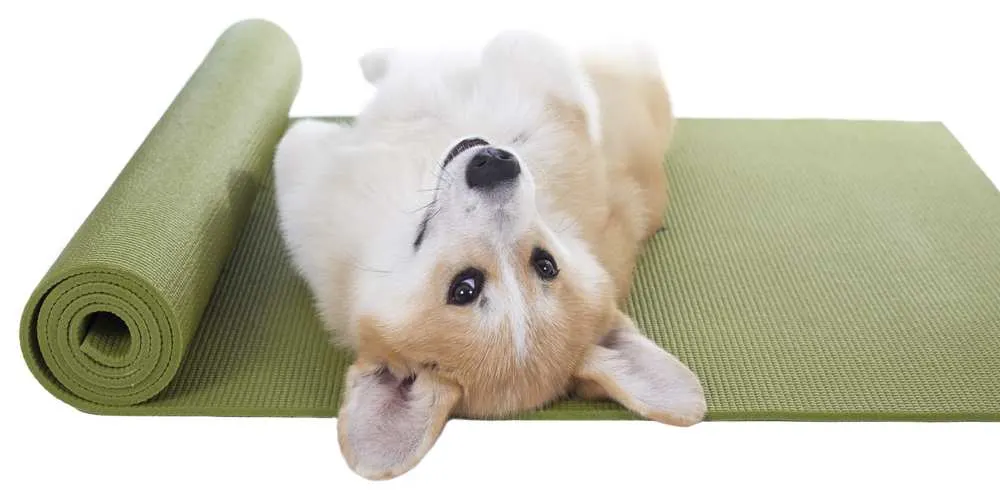
The Diet
You will always hear nutritionists and doctors use the old phrase – you are what you eat. This is something to live by. What we put in our bodies affects how they work and how healthy we are. Dogs are no different.
Now, some people may think that that’s a bit of an exaggeration, but you would be surprised. Giving your Corgi (or any dog for that matter) food that doesn’t fulfill the nutritional needs that its body has is a dangerous issue, and it should be taken seriously.
Does that mean that you need to start panicking and checking the labels on all your dog foods and treats?
No, it does not. There can be some health issues that could be helped with configuring your Corgis diet, but we’ll get to that in a minute.
For now, we’re going to try and give you some advice for the regular healthy Corgi and its shedding. Remember, this is a breed that doesn’t need any health problems to cover your whole house with its hair on a daily basis.

Types Of Dog Food
There are a few different types of dog food, and each of them affects your pooch in one way or the other. Some can have a positive effect and slow down the shedding, and some can do the opposite! Let’s take a look at the foods you can find at the store:
Dry Food
- This is by far the most popular type of pooch meal that you can find. Dry foods are made to have all sorts of nutrients and supplements packed inside them – but this can be a problem. If you don’t choose your brands carefully, you really can’t know what’s in them!
- Dry foods are processed at very high temperatures, so the supplements are there to replace the nutrients that burned off. Quality brands will make sure to use substances that will make your dog healthier. The same thing can’t be said for the lower quality brands, unfortunately.
- Always make sure to ask your vet to suggest a brand they know is right. They know your dog very well, so you can trust them much more than the workers in a pet shop, for instance.
Wet Food
- Wet foods are in second place, as far as popularity goes. This is still processed food, but there are differences between it and dry food. They have a higher moisture level and are packaged in tins or bags.
- This food is pasteurized, which means that there are no preservatives in it, and it helps with the already mentioned moisture levels. The shelf life is off the chart, too, if that’s an important factor to you.
- Don’t be fooled into thinking that your dog finds wet food tastier than the dry counterpart. Higher quality brands are still needed. Your Corgi will have an easier time eating it, though. The moisture will make sure of it!
Raw Food
- This is by far the healthiest food for your dog, but it might not be as great as it sounds. Sure, it makes sense that your dog would enjoy raw over-processed foods – but good processed food has nutrients and substances that you wouldn’t find in just what type of raw food.
- With that said, if enough research is done, this can be the best option for your dog. You can still add those supplements yourself.
Fresh Food
- This is a kind of middle ground between raw and processed food, and it can be the best version of both types of food. Fresh foods are lightly cooked, so they preserve important nutrients that are usually burned off during processing.
- This means that no supplements need to be added as a replacement, so you don’t have to worry as much about your Corgi eating something that he shouldn’t be eating.
- Shelf life is limited, but with good meal planning, this isn’t much of a worry.
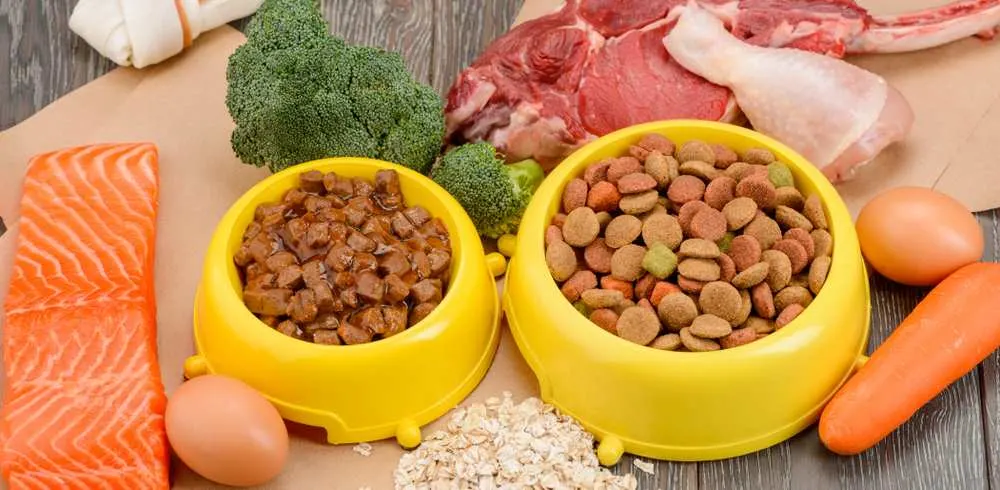
So What Does This All Mean?
Now that we know what types of food are available let’s check out which ones are suited best for our little fur machines!
The main thing you need to worry about when creating your dog’s anti-shedding diet is the ingredients of the food that you’re buying. Unless you cook the food by yourself, you can’t know what is in these foods by looking at them!
The foods that your dog needs to have healthy skin and hair need have good levels of healthy proteins, easily digested carbohydrates, healthy fats and oils, and vitamins and minerals. That’s the general list, and now we won’t go much deeper in this list to focus more on the substances that directly affect the skin and hair, always making sure that the food your dog eats is full of all these things!
Omega 3 & 6 Oils
If you ever had skin problems in your life, you know about these essential oils. Well, they don’t only work on us. They do miracles for your dog’s skin and hair too!
These fats come from fish oils and are known to help out quite a bit with your pooches shedding problems. They work by helping their hair grow thicker and stronger and making the skin cells beneath them stronger. This way, the skin can handle any conditions much easier and help normalize its moisture levels.
Add all this up, and both of your Corgis coats will be stronger, softer to the touch, and less likely to come off!
Vitamins & Minerals
Your Corgi (or you) needs a moderate dose of vitamins and minerals to help stay healthy. These supplements are generally suitable for your dog’s health, but some can help aim for the health of its skin or hair more than others.
Zinc is one of the minerals that should be in the diet if there is more shedding happening than you would prefer. To be clear, your Corgi will still shed like crazy – But zinc, and foods that have high levels of it, help with this well enough.
There are many factors that you need to think about when creating your dog’s diet. We can’t guarantee that your Corgi will respond to a specific eating plan the same way as, say, a Husky or some other hairy breed would. They will still shed like crazy. Heck, sometimes there’s so much hair coming off your dog you’ll start asking yourself – “Do Corgis shed more than Huskies?!” And honestly, they just might! But dieting can help.
Because every dog is unique in its way, we suggest experimenting a little. Your dog’s diet shouldn’t change too often, but trying something new every once in a while could help you find one that suits its skin or hair more than the others.
So that’s how to keep Corgi shedding to a minimum with dieting. At least those are the suggestions that we found (the vet could probably give you a couple more). It takes work but doesn’t worry, it’s possible!
Read More: Do Corgis Have Food Allergies?
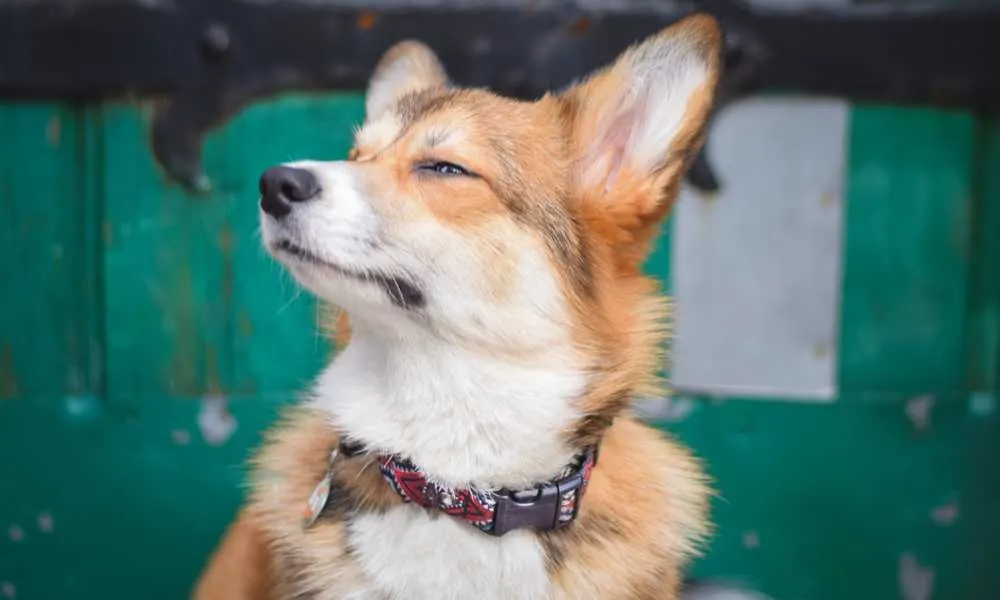
Too Much Shedding
So you probably figured out by now that Corgis shed like the ice age is coming. But it doesn’t mean that you shouldn’t do something if you think that it’s losing more hair than it should!
We know that that’s kind of tough to figure out how much hair is too much. Corgis tend to leave enough hair on the bed to make an extra blanket for the whole family. Nevertheless, if there is a problem, it needs to be solved as quickly as possible.
It may not sound that serious that they won’t have as much hair or that their coats won’t be as full as they were, but even if they have two coats on, those coats need to be healthy!
We will talk about a couple of things to look out for and what could be causing a condition like this. We have to mention that if your dog has bald spots or is losing bulks of hair at once – call your vet. There is only so much information that we can give you, and certain conditions need to be taken care of by a professional.
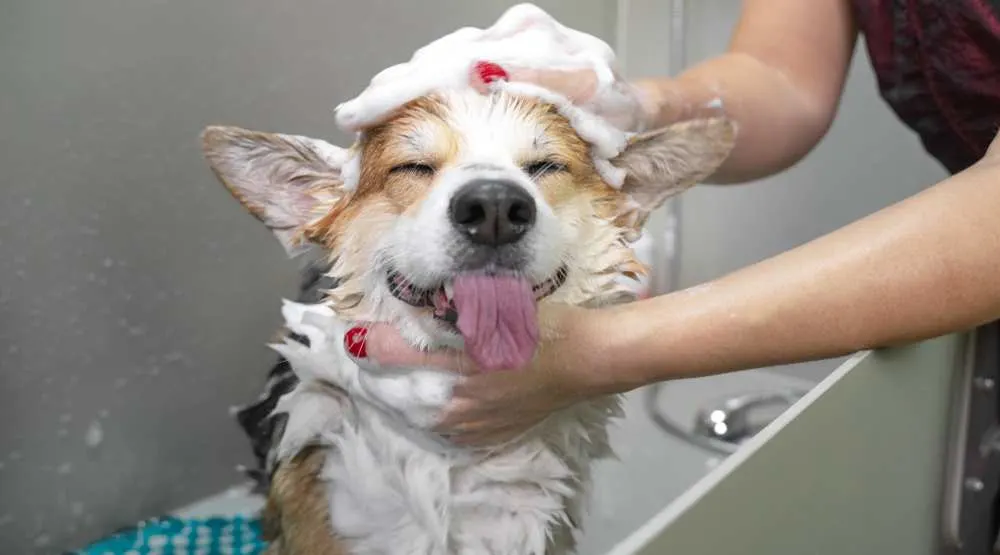
Wrong Shampoo
We already talked about how you need to be careful with how much showering your Corgi is getting. Once every six to ten weeks is more than fine, so it would be okay to round it up once every two months, just to make organizing easier.
But another important factor is picking a shampoo that suits your dog.
You might think that this is a simple matter. You just go to the pet shop and ask around; they probably know what to give you. Well, that’s just the beginning of the story.
If your dog has sensitive skin or, worse, some sort of severe skin condition – that could pose quite a problem when picking a shampoo. The thing is, it’s a game of trial and error. If you’re lucky, you’ll find just what you’re looking for on the first try! But if your dog keeps shedding, the search continues!
The important thing is not to get frustrated with your dog if it keeps leaving fur everywhere he sits or lays. They won’t understand why you’re frustrated, and they’re not shedding on purpose.
Let’s get on with it and try to help you pick a doggy shampoo that would best suit your Corgis needs. Your vet should be the first stop on this search, and they could make this whole ordeal a lot quicker and easier.
Checking The Labels
The first thing to do before even buying a new shampoo is to check the label. If your dog has sensitive skin, the best option could be soap-free shampoos. The title on these usually says that you can use them more frequently, but be careful about that. We recommend sticking to that two-month rule.
Now there will always be some magical herb advertised on the bottles, but the substances we found to work best are Oatmeal, Aloe Vera, and Almond oil. We can’t guarantee these things will work; after all, there are high-quality and low-quality brands.
What we do recommend is finding one that works and sticking to it. If your Corgis skin is sensitive but shows signs of getting better with a certain shampoo – then it’s time to show some brand loyalty!
Unfortunately, switching shampoos shouldn’t be frequent. This means that you won’t find one that works in a day! Shampoo’s take time to work, so you have to give them a chance before writing them off.
Always make sure to get rid of any excess shampoo from your Corgis coats and skin. They are incredibly hairy dogs, and there’s a good chance of some shampoo staying around. And don’t worry if your puppy starts shedding even more after a good shower. All that hair was ready to fall off anyway; the shower just sped-up the process.

Stress-Induced Shedding
Yes, dogs shed more when they’re stressed. It’s not that weird when you think about it. It is something that happens to all mammals, humans included. You probably know people who lost a bulk of their hair because they lead a stressful life. Well, dogs are no different!
The difference lies in the type of stress that they go through.
See, dogs don’t stress about the same things we do, obviously. Your Corgi won’t go bald because of the economic crisis. Dogs can experience good and bad stress. Sounds weird, right?
It’s not so much about the stress, it’s that it’s tied to an emotionally unstable dog. These are dogs that get scared or excited quickly. Anxiety can also be the cause of shedding. Dogs that suffer from separation anxiety, for instance, will leave a bulk of their hair in the spot in which they were desperately waiting for you to return from work.
While on the subject, depression is also a common suspect in shedding cases. It goes like this – if your dog doesn’t know how to control its emotions, it’s going to lose more hair than it should.
There are ways to deal with this. Teaching your dog that the world won’t end when you go to work each morning could help with milder separation anxiety cases. In more severe cases of this and depression, the only way is to go to a professional. Those kinds of mental health problems have to be handled by professionals.
Don’t worry, though. Corgis are usually full of joy and happiness. The trouble lies in that they go overboard easily, and in these cases, all you can do is give them a calm and steady environment and lifestyle. With age comes some much-needed calmness. That doesn’t mean that you should not play with your Corgi, though. Far from it!
They need exercise; they are made to be workers. What you should do is to make sure the exercise that they are getting is a healthy one. If your Corgi starts jumping uncontrollably whenever someone comes to visit, maybe you should just stay calm instead of jumping too (it’s almost impossible, we know). This may seem harsh at the moment, but it’s for their own good!
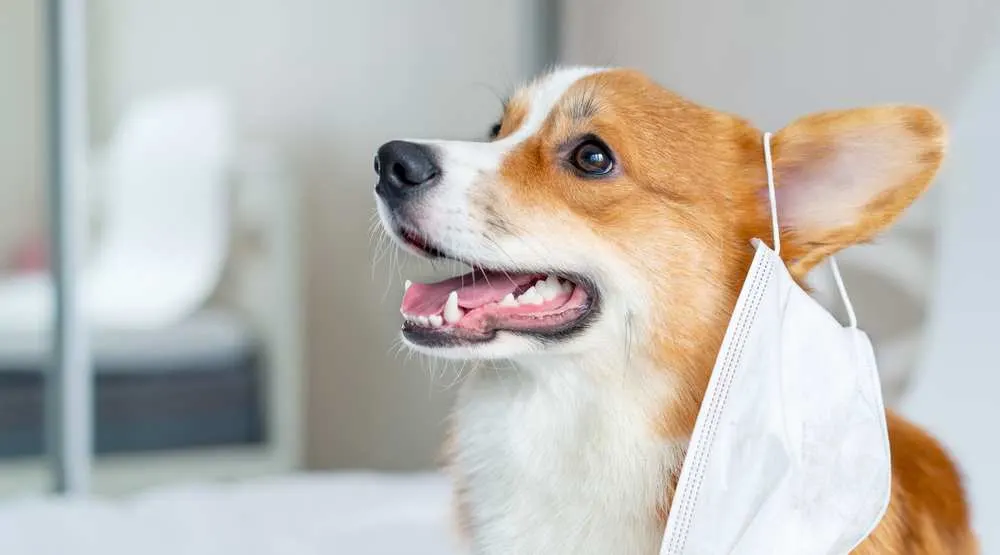
Corgi Shedding & Allergies
We arrive at the last and maybe the most common suspect in the case of dog shedding. Allergies can affect your dog without you even knowing it. They can’t tell you : “Hey, I think chicken is making me feel kind of weird,” though that would solve a lot of problems.
But let’s set aside the fact that dog-talking technology isn’t nearly where it should be – and get back to the allergies.
Here’s a list of the most common allergies that dogs have problems with:
- Chicken and Beef
- Corn
- Wheat
- Eggs
- Soy
- Peas and Potatoes (though this one is not as common as the others)
We know that this list looks kind of scary. After all, if you ever read dog food labels, you’d think that there is no food on the market that doesn’t contain at least some of these. Well, don’t worry.
First of all, even if your Corgi were allergic to every single one of these foods, you would still be able to find him something to eat. It would be a bit harder, sure, but not impossible.
But the chances of your dog having all of these allergies is close to none. But how should you go about finding out which one it has, and if he has any in the first place?
Well, a trip to the vet’s office should do the trick, but just in case that’s not an option for you, don’t worry – we got you covered.
This list is sorted by the number of dogs that suffer from said allergies. Chicken is the most common one, and soy, peas, and potatoes benign the least common. If you noticed that your Corgi is shedding more than usual, and you’ve eliminated all other factors – then it’s time to check the food.
The best way is to check the main ingredient in the food your dog is eating and then switch it to a more neutral kind. Finding ones that are rich in vitamins, minerals, and other nutrients won’t hurt either.
The trick is to see after a week or two if the shedding is getting back to normal. You don’t want to do this too often, though; switching your dog’s food too often can lead to stomach problems. If you haven’t managed to figure it out quickly (which means after no more than two types of food), then it’s time to talk to your veterinarian.
There is a good chance that the protein that comes from chicken and beef meat is causing the allergies, so test those out first. Corgis are not prone to any specific allergies. It all depends. Each dog is different, and you shouldn’t apply rules that work for other Corgis. Every dog is different!
Learn More: How bad are corgis for allergies? Do corgis trigger allergies?

Pregnancy And Heat Cycles
Female dogs go through a lot more than their male counterparts.
And since their bodies go through more, you can expect more shedding. For instance, females tend to shed more at the end of each heat cycle, something the male Corgi doesn’t have to worry about. But that’s not even close to how much hair you’ll be finding around the house if your Corgi is pregnant!
While carrying, the body goes through a lot of hormonal changes. Every pregnant mammal has to go through these things, unfortunately. Shedding is just one of the side effects of all these changes. And don’t worry about excessive shedding after birth. There will be a lot of it. But it’s all-natural and part of the process!
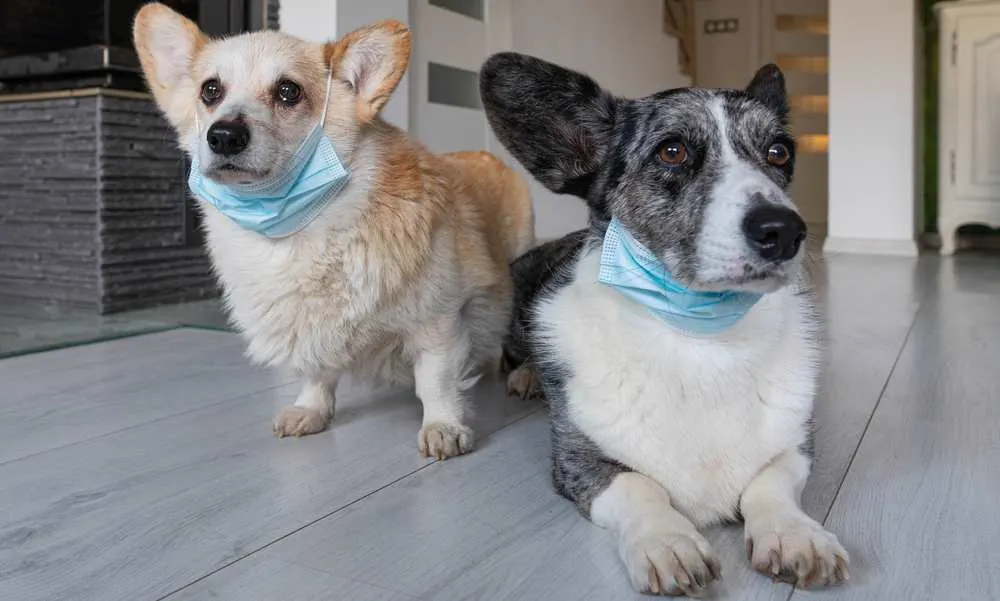
Serious Health Conditions
All the things that we mentioned so far are pretty much something you’ll probably encounter as Corgi’s owner. They shed a lot; it’s just what they do. But real excessive shedding is no joke.
Serious health risks could be present if your Corgi is shedding too much, and the sooner you deal with it, the better. Here are a couple of conditions that could make your dog shed at an alarming rate.
- Parasites
- Infections
- Weak Immune System
- Liver and Kidney Disorders
- Cancer
If you tried all of the things that we mentioned, the grooming, the dieting, etc., and your Corgi is still losing hair at an alarming rate – contact a professional.
We know that it sounds terrible when we list out these serious disorders and diseases. But it is important to always monitor your dog’s health. Sure, some pups will live a healthy life without any of these in sight. But severe medical conditions are very much a possibility, and they should be taken care of; the sooner, the better.
See Also: Why Does My Corgi Have Dandruff?

Final Words
You probably have many questions: how to reduce shedding in Corgis, or which Corgi sheds less? They all shed the same – a lot! We hope you have everything you need to start slowing down your puppy’s hair loss. Having a Corgi in the house means having its hair all over the house too. Shedding and Corgis go hand in hand; you can’t get away from it.
But can you blame them? They are fluffy little creatures that have two coats of beautiful hair on them. If the price is having a couch covered in loose hairs – we’re ready to pay it!
So don’t worry about it too much. Give your Corgi a warm home and a lot of love, and they will return the favor and even put in a little extra love and warmth.
To summarize: brush them every day if you can bathe them every two months. Make sure that they are healthy and that they get plenty of exercises. Will Corgis shed even when you do all these things? Probably, yes. But as soon as you see those little legs running towards you, none of it will matter.
Learn More: When Do Corgis Lose Their Puppy Coats?

